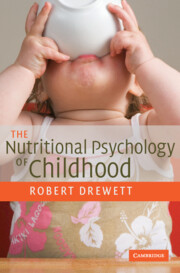Book contents
- Frontmatter
- Contents
- List of illustrations and table
- Preface
- 1 Introduction
- 2 The development of feeding behaviour: infancy
- 3 The development of feeding behaviour: weaning onwards
- 4 Born too small or born too soon
- 5 Nutritional deficiencies
- 6 Nutritional aspects of some physical conditions
- 7 Failure to thrive
- 8 Adiposity and obesity
- 9 Adolescence and the eating disorders
- 10 Some concluding thoughts
- References
- Index
3 - The development of feeding behaviour: weaning onwards
Published online by Cambridge University Press: 22 September 2009
- Frontmatter
- Contents
- List of illustrations and table
- Preface
- 1 Introduction
- 2 The development of feeding behaviour: infancy
- 3 The development of feeding behaviour: weaning onwards
- 4 Born too small or born too soon
- 5 Nutritional deficiencies
- 6 Nutritional aspects of some physical conditions
- 7 Failure to thrive
- 8 Adiposity and obesity
- 9 Adolescence and the eating disorders
- 10 Some concluding thoughts
- References
- Index
Summary
Weaning and the development of independent eating skills
Because of their early dependence on the mother's lactation, the development of feeding behaviour in mammals involves a striking discontinuity at the time of weaning. Weaning involves three separate changes, though they are linked in time. Firstly, there is a change in the kind of food taken, from milk to a range of solid foods. Secondly, there is a change in the mechanics of feeding behaviour, from the sucking characteristic of an infant feeding on milk to the biting and chewing characteristic of older children and adults feeding on solid foods. This change in the mechanics of feeding behaviour is only partly linked to changes in the kind of food taken. Adults, for example, also drink milk, but they do not drink it in the way infants do. Thirdly, there is a change from an obligatory dependence on the mother or another carer to more independent feeding. Because the diet of adults involves a wide range of foods, weaning calls for an extensive learning process, in which a child comes to distinguish foods from things that are not foods, and to choose between different foods.
As we saw in Chapter 1, the average energy expenditure of infants increases steadily over the course of the first year, from about 1 MJ per day at 1 month to about 2.5 MJ a day at 8 months, an increase of 150%.
- Type
- Chapter
- Information
- The Nutritional Psychology of Childhood , pp. 43 - 68Publisher: Cambridge University PressPrint publication year: 2007



